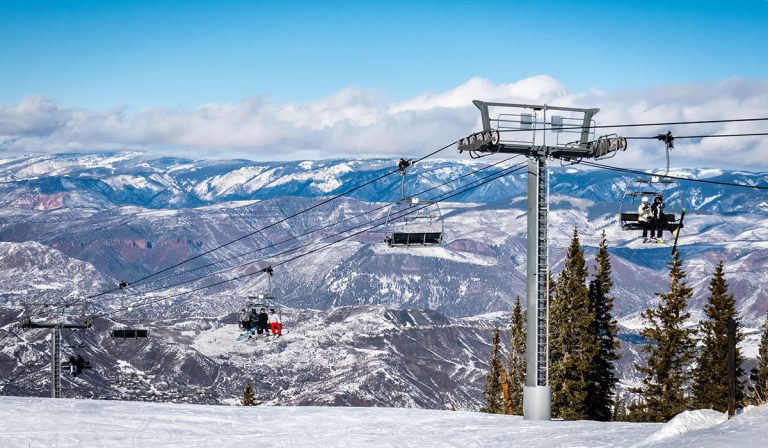Central Committee of the Communist Party of China Promotes Outdoor Sports, Including Outdoor Education, Adventure Tourism and Environmental Education

A report issued on October 25, 2022 jointly by eight Chinese government ministries outlines a “Outdoor Sport Industry Development Plan 2022-2025.” The comprehensive plan calls for implementing the opinion of the General Office of the Central Committee of the Communist Party of China on developing the outdoor sports industry in China.
The report is notably comprehensive, outlining the recent history of outdoor sports in China, articulating basic principles like innovation and market dominance, setting measurable objectives, integrating diverse elements of society and industry with outdoor sports, and covering a wide variety of activities and Chinese geographies.
The ministries are the Sports General Administration, Development Reform Commission, Ministry of Industry and Information, Ministry of Natural Resources, Ministry of Housing Urban and Rural Construction, Ministry of Culture and Tourism, Forest and Grass Bureau, and Railway Bureau group companies.
The report calls China’s 14th five-year plan (2021-2025) timeframe a “critical stage in promoting the sports industry to become the pillar industry of the national economy.”
During the previous five-year period, the outdoor sports industry rapidly developed in China, the report notes. The number of participants in outdoor sports continually increased, to over 400 million by the end of 2021. Various outdoor sports associations rapidly developed. The supply of outdoor products—for hiking, biking, skiing, kayaking, orienteering and more—increased across China. And facilities—from outdoor camps, boat docks, climbing sites, and parks—increased. And policy on sports, fitness, and the leisure industry was developed.
However, the report notes, the outdoor sports industry “is still in the early stages of development.” Natural resources are not open to outdoor sports. Transportation to outdoor activities is an issue. “Outdoor sports professionals are lacking,” the report states. And facilities, products, and brand influence need improvement.
The report calls for continued development at all levels—from physical infrastructure to technological revolution such as artificial intelligence—to develop outdoor sports industries.
The Vision of Xi Jinping
The report is guided by Xi Jinping’s socialist ideas, and calls for full implementation of “the important discussion of sports work by General Secretary Xi Jinping.” This reflects Xi’s strong control over Chinese industry, economics and policy, and the relentless drive of China—unencumbered by deliberation-heavy democratic processes—to rapidly develop into a powerful and highly developed nation.
The development of the outdoor sports industry is to follow several principles, including:
- Ecological Protection. Outdoor sports projects are to be developed on the basis of protecting the environment.
- Innovation. Management innovation, technological innovation, service innovation and product innovation are called for.
- Market Dominance. The report calls for those implementing the five-year plan to “adhere to market dominance.”
- Safety. Raising awareness of risk prevention and improving safety regulations—notoriously underdeveloped for outdoor activities in China—is required.
The vision is that by 2025, “the high-quality development of the outdoor sports industry has achieved remarkable results,” from boosting supply and demand, product and service development, and continuous innovation. By 2025, the total size of the outdoor sports industry in China is to exceed three trillion yuan (over USD $420 billion).
Tasks
The report calls for a vast number of actions spanning industry sectors from natural resources to transportation to artificial intelligence. One such action is opening natural resources to outdoor sports, and establishing pilot projects for sports activities in China’s national parks.
Transportation of participants to ski areas and other destinations, and efficient shipping of outdoor sports equipment, is also an area targeted for development.
The report calls for an “outdoor sports industry development platform,” including digitization of information, encouragement of universities to conduct theoretical and practical outdoor sports research, and a “China Outdoor Sports Industry Conference” to increase the influence of outdoor sports.
Development of sports facilities in “mountains, land and air” is called for. The report gets specific—describing sailing and diving projects around Hong Kong, mountain climbing in Chengdu, “car self-driving projects” in the Yellow River area, and dragon boating in the Yangtze River Economic Zone.
Outdoor sports venue facilities are to be developed, from cycling roads and snow channels to a “series of outdoor mountain camps,” air flight camps, ski fields and sports boat docks.
A “national walkway system” is envisaged, and the construction of “outdoor sports camps” are called form. In true Chinese form, the plan is to move quickly and at scale: “by 2025, 10,000 outdoor sports camps will be built,” the report says.
And quality is a priority: assessment standards for different types of outdoor sports camps are to be developed, and the camps are encouraged to have “excellent operating management standards, good service quality, and significant comprehensive benefits.”
Outdoor Education—and Most Everything Else
The report calls for improving the development of “outdoor education and training,” although specifics are not described. But outdoor education is but one of myriad other aspects of outdoor activities the report calls for developing—outdoor competitions, outdoor festivals, outdoor exhibitions, sports tourism and more are described.
But it’s not just outdoor activities. The development plan sees an acceleration of the transformation and upgrading of outdoor sports good manufacturing. This includes developing new materials and advanced technology, collaboration between outdoor sports companies and universities and scientific research institutes, and improving technology research and development capabilities.
Outdoor sports is to be integrated with education. An integrated transportation connects scenic spots and resorts with population centers and self-driving car initiatives. Outdoor sports are to be integrated with old-age care. “Outdoor sports movies, documentaries, photography, animation, collections and other creative and display exhibition activities” are to be developed.
Outdoor events and festivals are to be developed, and their quality improved. By 2025, the report says, “100 nationally renowned outdoor sports events and festival brands will be created.”
Facilities such as indoor climbing walls and indoor ski ranges are to be established. “Intelligent technologies” such as Augmented Reality (AR) and Virtual Reality (VR) are to create “immersive outdoor sports” experiences.
Outdoor sports associations “at all levels” are to be developed, and the “standard norms” of outdoor sports organizations are to be improved. This represents yet another major change in the Chinese outdoor industry; currently, aside from the Chinese Mountaineering Association, there are few outdoor industry standards-setting bodies in mainland China.
Outdoor sports are to be integrated into schools, to support “ecological education” and learners’ physical and mental development. This includes extracurricular competitions, interscholastic outdoor sports, and “outdoor sports social organizations.”
Outdoor sports are to be integrated into the community and into the family as well.
The training of outdoor athletes and outdoor sports participants is to be strengthened and vastly expanded. By 2025, the goal is to “reach 100,000 outdoor sports management talents; reach one million outdoor sports practitioners with professional outdoor sports skills and service levels; and reach ten million in-depth participants skilled in outdoor sports skills.”
And all this is to happen with attention to ecology and a low-carbon outdoor sports system. “Ecological environmental protection” standards are to be implemented; the report admonishes, “do not exceed the red line of ecological protection and destroy natural ecosystems.”
Risk Management
Attention to safety is not lost in the dizzying array of projects, tasks and priorities called for in the eight-ministry report.
In May 2021, twenty-one professional runners died of hypothermia on a 100-km race in Gansu province in northwest China, leading to the nationwide suspension of ultramarathons across the country.
Perhaps recalling this tragedy, an “outdoor sports safety hierarchy control system” is to be established. And the “outdoor sports rescue system” is to be improved, and a government-led sports rescue team system is to be built. Social emergency forces are to be developed, and the formation of outdoor sports rescue volunteer teams will be encouraged.
China is On the Move
China has a well-deserved reputation for making big projects happen fast. From developing high-speed rail to building entire hospitals in days and huge cities from scratch, China’s powerful central government appears to have both the drive and the operational skills to develop and dominate industries at a startling pace.
The outdoor sector is structurally little different from the high-tech industries that China seeks to dominate, observers say, as part of its grand strategy and ambition to “take center stage in the world.”
That said, one can easily celebrate China’s commitment to getting its citizens outdoors, enjoying healthy active sporting activities, while developing its own economy and protecting the natural environment.
In a few years, the results of China’s Outdoor Sport Industry Development Plan 2022-2025 will be evident. If the past is a guide, major advances in the outdoor sector in China will be easy to see.
Note: the report on the Development Plan 2022-2025 was translated from the original Chinese. Imperfections in translation may have led to loss of nuance in the language and intent of the original report, although all reasonable efforts were taken to ensure the accuracy of this article.







